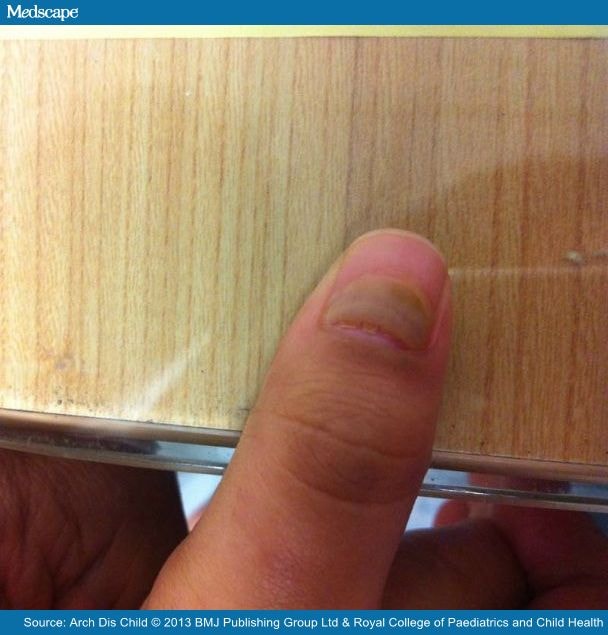Antibiotic Exposure in Infancy Linked to Food Allergies
Kate Johnson
Feb 28, 2013
SAN ANTONIO, Texas — Exposure to more than 2 courses of antibiotics in the first year of life is associated with a significantly increased rate of food allergy, according to research presented here at the American Academy of Allergy, Asthma & Immunology 2013 Annual Meeting.
"We believe it may be related to a disruption of normal gut flora," lead investigator Bryan Love, PharmD, from the South Carolina College of Pharmacy in Columbia, toldMedscape Medical News.
"Systemic antibiotics not only kill bacteria causing an infection...[they] are also distributed to other parts of our body where they can kill susceptible bacteria that are part of our normal flora — especially in the gastrointestinal tract," Dr. Love explained.
In their retrospective case–control study, presented as a late-breaking abstract at the meeting, Dr. Love and colleagues found an almost 2-fold increase in food allergy in children exposed to 3 or more courses of antibiotics between the ages of 7 and 12 months.
We believe it may be related to a disruption of normal gut flora.
Dr. Love explained that younger children (from birth to 6 months) also faced an increased risk with exposure (odds ratio, 1.43), although he did not present those data.
In both age groups, rates of food allergy were significantly higher (P < .0001), he told Medscape Medical News.
The investigators used South Carolina Medicaid billing data to identify more than 1100 children diagnosed with food allergy before the age of 3 and 6433 control subjects. They matched cases and controls by birth year, sex, and race.
Subjects in the 2 groups received a total 8046 courses of antibiotics, including penicillin (54%), cephalosporins (21%), macrolides (18%), and sulfonamides (7%).
The investigators controlled for asthma, atopic dermatitis, and eczema. "We know these patients tend to be more prone to food allergy," Dr. Love said. "They're also more likely to receive antibiotics, so we wanted to control for that."
Logistic regression analysis showed that subjects with food allergy were more likely than control subjects to have received a course of antibiotics.
Table. Antibiotic Exposure Before 12 Months
| Outcome | Food Allergy Group | Control Group | P Value |
| At least 1 course of antibiotic | 77% | 66% | <.001 |
| Mean number of antibiotic courses | 2.65 | 1.84 | <.001 |
| Time to first antibiotic | 181.5 days | 190.1 days | .009 |
One or 2 rounds of antibiotics did not significantly increase the rate of food allergy, the investigators report, but 3 or 4 did.
Table. Risk for Food Allergy With Antibiotic Exposure
| Antibiotic Exposure | Odds Ratio |
| Before 12 months | 1.71 |
| Between 0 and 6 months | 1.43 |
| Between 7 and 12 months | 1.98 |
| 3 courses | 1.45 |
| 4 courses | 1.60 |
| 5 courses | 2.15 |
"Whilewe understand that this type of study can't assign causality, it does appear that this needs to be looked at further. This could be a reason for increasing rates of food allergy," Dr. Love said.
Katie Allen, MD, from the Murdoch Children's Research Institute at the University of Melbourne in Australia, noted that it is not clear how the investigators controlled for eczema in this study.
"In our HealthNuts cohort of 5300 kids [Clin Exp Allergy.2010;40:1516-1522], we found a high rate of antibiotic use in kids with allergy. Unfortunately, almost all of it was due to the fact that they had infected eczema," she said.
"We think antibiotics being associated with food allergy is a spurious association, but it's really only associated with the treatment of infected eczema." Dr. Allen toldMedscape Medical News.
She added that "we know there's a lot of eczema in the first year of life. It may well be that antibiotic use is associated with eczema, and we know that eczema is associated with food allergy."
She thinks there is evidence that the widespread use of antibiotics has changed the microbiome at the population level. "But we need to do due diligence at the individual level to ensure that we're not making a spurious association," she noted.
"It's a wonderful hypothesis and we're all hotly looking at it, but...we need to be very careful to make sure that the work is of the highest quality and we don't jump on the bandwagon before we've looked at it properly," Dr. Allen noted.
This study was funded by the US Department of Health and Human Services Health Resources and Services Administration. The investigators and Dr. Allen have disclosed no relevant financial relationships..
American Academy of Allergy, Asthma & Immunology (AAAAI) 2013 Annual Meeting: Abstract L14. Presented February 26, 2013.
